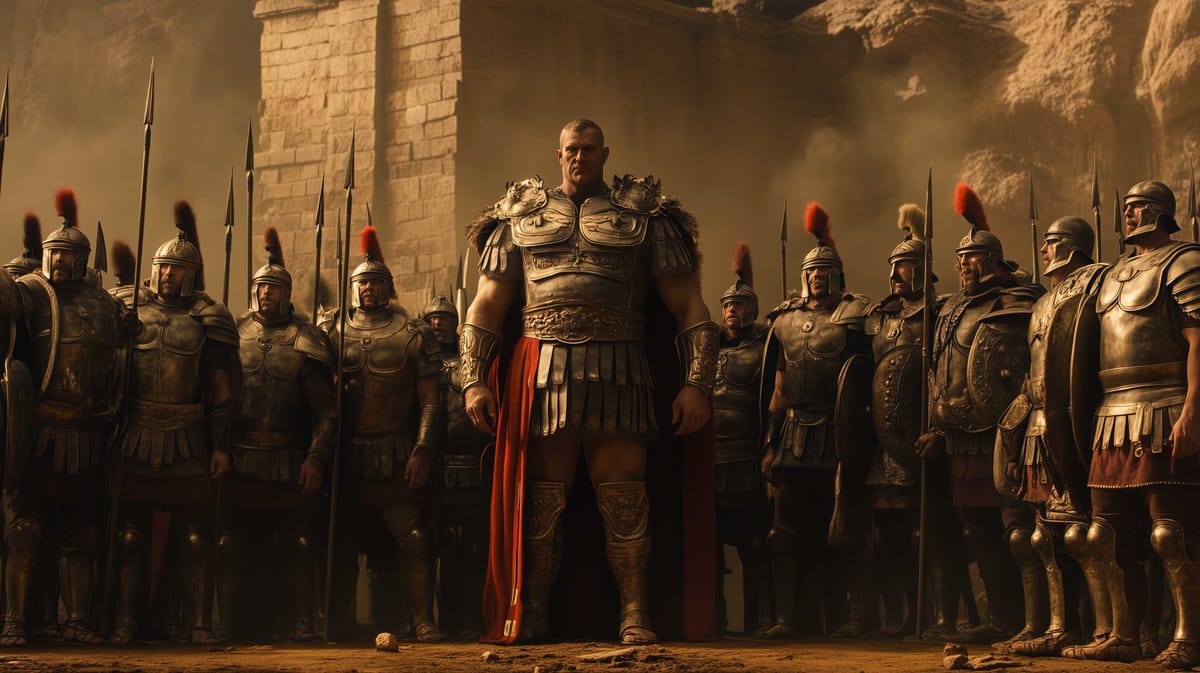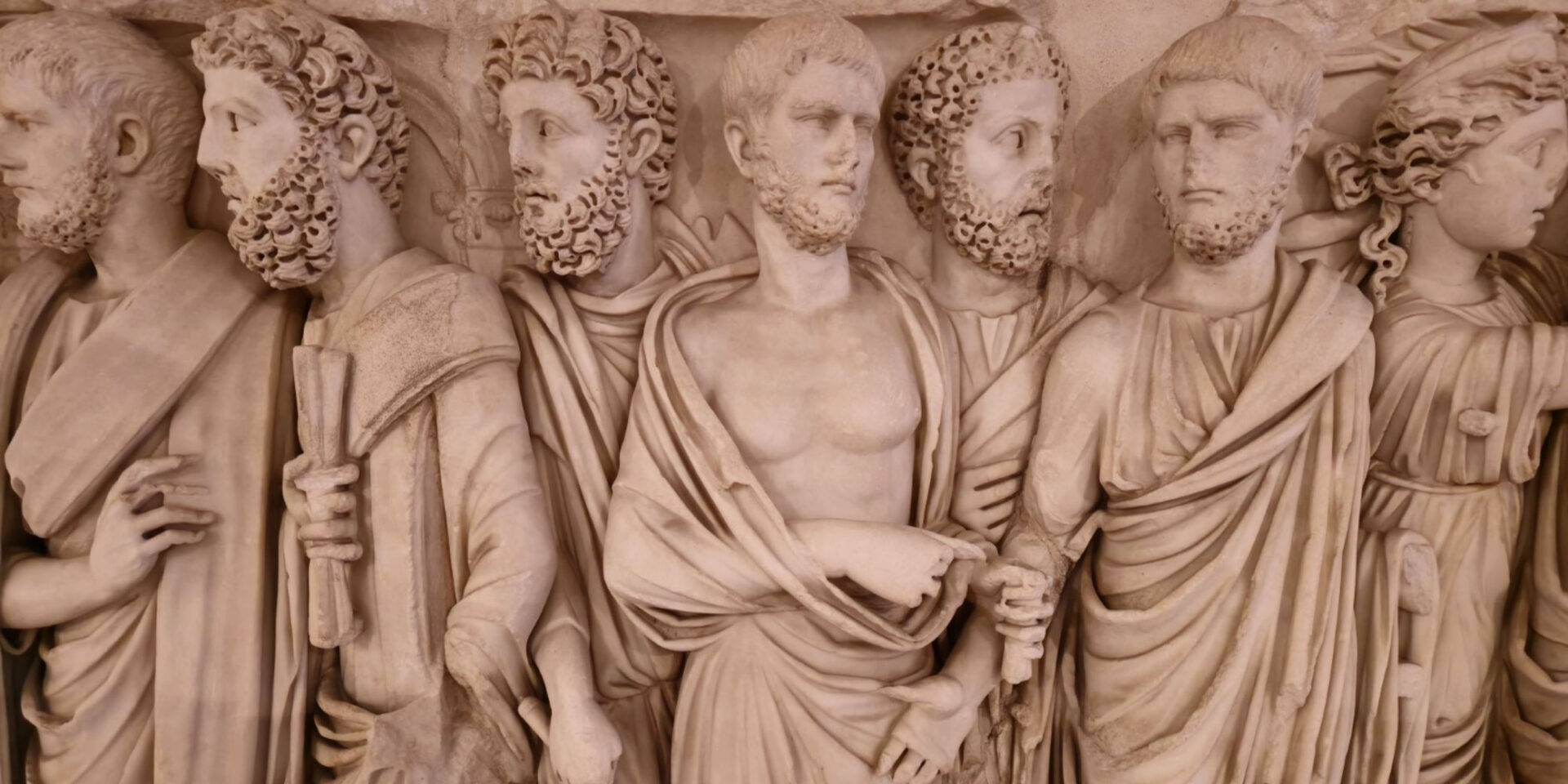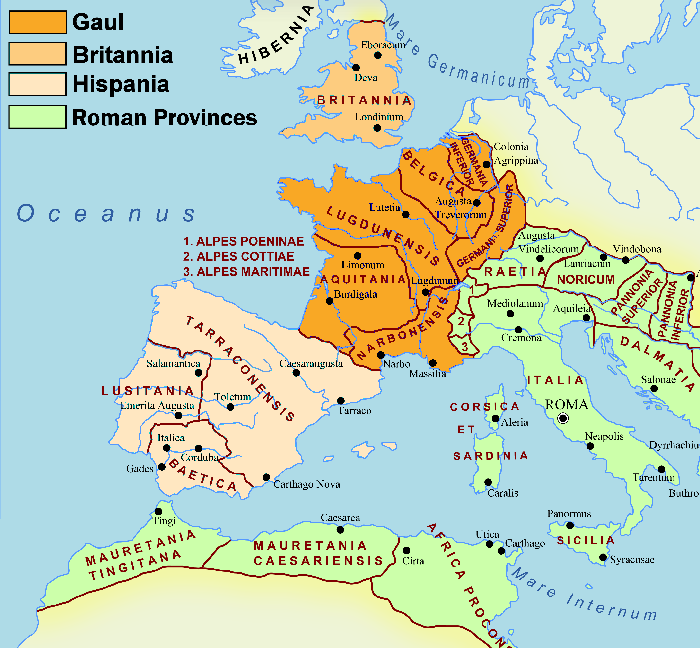During the tumultuous Third Century, the Roman Empire faced a period of crisis that brought it to the brink of collapse. With a deluge of invading tribes, economic difficulties, and the emergence of breakaway empires, the future of Rome looked bleak and uncertain. Leaders emerged amidst this chaos, aiming to halt the downward spiral and revive the empire’s former glory. Between 235 and 285 AD, a staggering number of emperors quickly succeeded each other, highlighting a period dominated by military rule and internal conflict. This instability cast doubt on the empire’s future, foretelling the challenges that lay ahead.
The assassination of Emperor Alexander Severus marked the beginning of this upheaval, leading to the rise of Maximinus Thrax, a soldier-turned-emperor known for his focus on military matters rather than political alliances. His reign, though devoted to defending the empire’s borders, fell victim to rebellion and was cut short. As Rome grappled with internal strife and external threats, the Cyprian Plague added another layer of devastation, crippling the empire further. Amidst the turmoil, various leaders arose, each attempting to patch the fragile state of the empire and confront the numerous adversities it faced, setting the stage for both challenges and resilient recovery.
Key Takeaways
- Rome faced severe instability and threats during the Third Century.
- Military leaders played crucial roles in addressing threats and maintaining control.
- The Cyprian Plague significantly weakened the empire’s resources and morale.
Rome’s Edge of Collapse
The Crisis of the Third Century was a tumultuous time for the Roman Empire. A series of internal and external pressures nearly led to its downfall. Invaders pushed against its borders, internal strife rocked its stability, and rival empires emerged.
From 235 to 285 AD, the empire faced continuous leadership changes, with twenty emperors in fifty years. Emperors such as Alexander Severus and Maximinus Thrax struggled with barbarian threats and political instability. This period was marked by emperors often emerging from the military rather than political backgrounds, leading to power being heavily influenced by the military.
Maximinus Thrax, a soldier through and through, took over after Severus. He was focused on dealing with tribal threats, like the Alamanni, along the borders. Despite his efforts, his reign ended in chaos due to an uprising supported by the Roman Senate, leading to his assassination by his own men.
During this time, multiple regions within the empire became neglected, leading to vulnerabilities at the borders. Natural factors like climate change compounded these problems, driving Germanic tribes westward. In addition, disease like the Cyprian Plague devastated the population, causing significant deaths and impacting both military recruitment and food production.
Valerian, another emperor, attempted to address these threats. He delegated European threats to his son while taking on Persia directly. Unfortunately, Valerian was captured, marking a historical low point for the empire. His son, Gallienus, took over, but he faced the secession of the Gallic Empire, which fragmented Roman control over key territories.
Amid this chaos, Claudius Gothicus rose to power. His military background helped him secure the loyalty of the troops, leading to several important victories against multiple adversaries, including the Goths and the Alemanni. His notable success at the Battle of Naissus showcased Rome’s military discipline.
Unfortunately, Claudius’ reign was cut short by the rampant Cyprian Plague. His death led to a brief, unstable succession before Aurelian assumed control, with the support of the legions, to continue the fight for the empire’s survival.
Emperor Alexander Severus’ Assassination
Emperor Alexander Severus faced criticism for his handling of threats near Rome’s borders. His perceived weakness in dealing with the barbarian invasions, especially in Germania, led to unrest among his military ranks. Soldiers and generals longed for a ruler who could effectively manage the empire’s pressing defense issues.
Amidst these tensions, Alexander Severus was assassinated in 235 AD. His successor, Maximinus Thrax, rose to power. Maximinus, distinct from his predecessor, had a solid military background rather than a political one. He was a practical choice for those prioritizing military resolve over political acumen.
Alexander’s assassination marked a turning point where the military’s influence over the selection and replacement of emperors became apparent. This event was just the start of a chaotic period where Rome experienced frequent leadership changes, often driven by military motives rather than stable governance.
Maximinus Thrax’s Rise and Decisions

Maximinus Thrax became emperor after the murder of Alexander Severus, marking a significant shift in Roman leadership. Thrax was not from the political class but a seasoned soldier, gaining power through the military. His rule followed a period when Rome frequently changed leaders through violent means.
Military Campaigns and Challenges
Thrax chose to stay with his troops along Rome’s European frontiers. He engaged in battles with various tribal groups, with notable confrontations against the Alamanni and during the campaign in Germania, including the battle of Harzhorn. His leadership aimed to secure the borders from these growing threats.
Political Strife and Rebellion
Despite his military efforts, Thrax faced political opposition. The Roman Senate never fully accepted him because of his non-aristocratic origins. In 238 AD, a rebellion emerged in the northern African provinces, where two new leaders claimed the title of emperor. The Senate supported these rivals, but internal conflicts led to their deaths before Thrax had to confront them.
Downfall and Legacy
As Thrax set out to address this political challenge, he was betrayed and killed by his own men. His assassination marked a trend of short-lived emperors with a military background, leading to constant internal power struggles. This era saw the empire vulnerable to external pressures, as frequent changes in leadership weakened Rome’s control over its vast territories.
Military Control and Political Unrest
During the Crisis of the Third Century, the once indomitable Roman Empire teetered on the edge of collapse. Invaders breached its borders, economic crises gripped its core, and secessionist empires emerged on multiple fronts. This period of chaos, spanning 235-285 AD, saw rapid shifts in leadership, with twenty emperors in just fifty years largely drawn from the military. The traditional strongholds of Roman power, like the Senate, faded into the background.
Emperor Alexander Severus’s death marked the onset of this era, his assassination partly triggered by his lenience toward barbarian threats. Succeeding him, Maximinus Thrax ascended from a military background, confronting threats on Rome’s frontiers. His confrontations with the Germanic tribes, particularly the Alamanni, highlighted this period, including notable battles like that of Harzhorn. Yet, his reign was cut short by internal rebellion and his eventual assassination.
The ensuing years were marked by internal power struggles and the rise of military leaders as short-lived emperors. The result was neglect of Rome’s border regions, which allowed Germanic tribes to exploit the empire’s distractions, conducting raids that decimated the regions previously under Roman control. Compounding the empire’s troubles, the Cyprian Plague emerged in 251 AD, decimating populations and straining military and agricultural resources.
Throughout this turmoil, leaders like Valerian attempted to stabilize the empire but faced setbacks such as his capture by the Sassanids. His son, Gallienus, continued the struggle against external threats but encountered internal strife, including the secession of the Gallic Empire, which fractured Rome’s western territories.
Amidst these challenges, Claudius Gothicus emerged, momentarily reviving Roman military prowess. He achieved notable victories against the Goths and Alemanni and began the reunification of the empire by challenging the Gallic usurpers. His reign was brief, cut short by disease, but his efforts laid the groundwork for successors like Aurelian to reclaim and fortify the empire’s fractured territory. The cycle of military dominance and political instability left an indelible mark, signaling the empire’s enduring struggle to maintain its sovereignty.
Uprising and Reaction of the Senate
In 238 AD, a significant uprising erupted in the north African territories of Rome, where two individuals surprisingly declared themselves as co-emperors. This bold move presented a direct challenge to Maximinus Thrax, who was serving as emperor at the time. Maximinus, originally from the border regions and with a reputation as a true soldier, was not warmly embraced by the Roman Senate. His background and social standing contributed to the senators’ unwillingness to accept him fully.
Despite his efforts defending Roman borders, particularly against Germanic tribes, Maximinus faced opposition both from within and outside the empire. The Senate, emphasizing their disdain, supported his rivals who had claimed the title of emperor. Not long after, these rivals took their own lives, ironically resolving the immediate crisis in North Africa.
Yet, the Senate persisted in their defiance by naming two new leaders to stand against Maximinus from the heart of Rome. This prompted the furious emperor to march toward the capital intent on addressing these usurpers. Nevertheless, he would never reach Rome or engage his political adversaries directly, as he was assassinated by one of his own men during the journey. This pattern of political paranoia and internal upheaval set the stage for the turbulent times that followed, marked by frequent shifts in leadership and continued military influence over the empire.

The Germanic Threat and External Invasions
During a turbulent era, the Roman Empire faced pressing challenges on its borders, especially from Germanic tribes. The crisis began when Emperor Alexander Severus was assassinated, criticized for his lenient policies toward these threats. His successor, Maximinus Thrax, a seasoned soldier, took up arms to defend the empire. He organized strong offensives against these groups, notably the Alamanni, and launched an aggressive push into Germania. In one confrontation, the Battle of Harzhorn, around 9,000 Roman troops engaged a coalition of Germanic tribes in a densely wooded area.
This period saw chaos within the empire, with emperors replaced swiftly due to political and military strife. Rome’s internal conflicts allowed Germanic groups to capitalize on the disorder. These tribes made significant advances, raiding and terrorizing areas that once were firmly under Roman control. Valerian attempted to stabilize the situation, delegating the European crisis to his son while he managed conflicts in the east. However, his capture by the Sassanids marked the first time a Roman emperor suffered such a fate, shaking Rome’s stability even further.
Gallienus succeeded Valerian but faced the additional challenge of the Gallic Empire’s secession, losing essential territories like modern-day France and parts of Germany. Rome’s connection to Spain was severed, illustrating the empire’s vulnerability. The situation grew more precarious due to the ongoing Cyprian Plague, killing up to 5,000 people daily in Rome and overwhelming resources.
Claudius Gothicus, a soldier by profession, came to power amidst these threats. His reign, though short, was marked by vital victories. He successfully subdued the Goths, Alemanni, and even managed to dent the seceding Gallic Empire. His triumph at the Battle of Naissus shattered the Goths’ strength, allowing Rome to regain footing. Unfortunately, his campaign ended abruptly as the Cyprian Plague claimed his life, leaving the empire to be led by a new emperor, Aurelian.
Through military strength and strategy, these leaders worked to secure Rome against external threats, although the internal turmoil and health crises continued to test the empire’s resilience.
Devastation Caused by the Cyprian Epidemic
The Cyprian Epidemic, which erupted in 251 AD, delivered a devastating blow to the already weakened Roman Empire. During a period when Rome struggled with internal conflict, economic hardship, and persistent border threats, this disease caused untold suffering and disruption.
The epidemic swept through Roman territories for twenty years. Reports from the time indicate that the disease claimed as many as 5,000 lives daily in Rome’s bustling streets. The scale of the disaster was unprecedented, with bodies piling up faster than they could be handled.
The disease, likely a form of smallpox, spread rapidly in a world increasingly connected by trade and movement. This high fatality rate left the populace with minimal immunity, intensifying the outbreak’s impact. As a result, the crisis influenced not only public health but also contributed to significant issues in agriculture and military recruitment.
Farmers, stricken by illness or fleeing infected areas, abandoned fields. This caused food shortages and increased pressure on an already struggling economy. In the military, recruitment efforts faltered as the pool of healthy recruits diminished, leaving borders vulnerable.
The reign of Emperor Valerian, already challenged by external threats, was further destabilized by this epidemic. While Valerian attempted to manage threats in the east, he was captured, a historic first that sent shockwaves through the empire. His capture left Rome leaderless and exposed.
Amidst these challenges, Valerian’s son, Gallienus, faced his own battles, including the secession of the Gallic Empire. These challenges highlighted Rome’s fragility and compounded the devastation caused by the Cyprian Epidemic, threatening the empire’s survival.
Claudius Gothicus later emerged as a prominent figure during this chaotic time, achieving military successes despite the ongoing epidemic’s ravages. Yet, his progress was cut short when he himself succumbed to the epidemic, demonstrating its toll across all societal levels. The ongoing struggle to manage the fallout from the Cyprian Epidemic illustrates a key period of vulnerability in Roman history.
Valerian’s Rule and Capture
Valerian took charge during a turbulent time in Roman history. Faced with chaos within the empire and threats from outside, he set his sights on restoring stability. Valerian focused on securing Rome’s borders, especially against eastern threats from the Sassanids. His strategy involved giving his son, Gallienus, the task of dealing with European barbarian invasions while he ventured east.
In the east, Valerian engaged in military action against the Sassanid Empire but faced unexpected challenges. During a pivotal campaign, Valerian was captured by the Persian forces. This unprecedented event marked the first time a Roman emperor was taken captive, sending a wave of shock throughout the Roman world. Despite his capture, Valerian’s agenda of solidifying Rome’s east front was crucial at the time. His capture highlighted the ever-present dangers Rome faced and fueled instability within the empire.
Meanwhile, Gallienus, taking over from his father, continued to counter threats in Europe. The secession of the Gallic Empire posed a significant threat, as territories that are now modern France, Britain, and parts of Germany broke away. This divide highlighted Rome’s challenges in maintaining unity during the Crisis of the Third Century.
The Rise of the Gallic State
The third century was a turbulent time for the Roman Empire. Internal conflicts and external threats left Rome in turmoil. During this period, the empire faced the threat of disintegration, and among the rebellious territories, the emergence of the Gallic Empire stood out. The Crisis of the Third Century saw the Roman Empire grappling with significant challenges like military strife and economic instability.
In the midst of these chaotic events, an influential figure named Postumus took control of the Gallic territories. This separatist state effectively covered regions that are now France, parts of Germany, and included Britain. The establishment of the Gallic Empire under Postumus led to a serious blow for Rome, as it severed crucial connections to Roman lands in Spain and exposed the vulnerability of the empire’s northern borders.
The leadership of Postumus held the Gallic Empire together for 14 years, a testament to his control and strategic nous. Even after his death in 269 AD, the Gallic Empire remained a potent symbol of the fragmentation happening within the Roman world. This era was marked by Rome’s desperate needs for unifying leadership to mend the shattered pieces of the empire.

Revival Led by Claudius the Gothic
Claudius Gothicus, emerging as a soldier-emperor, marked a turn in Rome’s fortune during a chaotic period. Known for his military background, Claudius wasn’t from the traditional lines of rule but gained respect due to his army service. Bold in his approach, his reign from 268-270 AD brought significant victories. His leadership saw decisive wins over enemies such as the Goths and the Alemanni.
One of the key triumphs under Claudius was the Battle of Naissus. Here, in what is now Serbia, Roman forces used disciplined formations to crush the Goths’ cavalry. Claudius earned the title “Gothicus” thanks to his triumph.
Another victory for him was at Lake Benacus, where the Alemanni faced a defeat while trying to cross the Alps. This effectively calmed the immediate barbarian threats, allowing the empire to breathe and recover.
The Gallic Empire, a separate state, was also targeted. Claudius made advances into its territory, weakening its power. Though his efforts laid the groundwork, it was Aurelian who later completed Rome’s reunification. Sadly, Claudius’ progress was cut short by illness, believed to be the Cyprian plague, which claimed his life. Despite his short reign, Claudius’ legacy as a restorer of Roman power lingered.
Aurelian’s Rise and His Military Successes
Aurelian stepped into a Roman world teetering on the edge of ruin. The Roman Empire faced myriad challenges, with invaders encroaching on its borders and chaos within. Aurelian, a seasoned military leader, had spent over three decades serving Rome across various campaigns. This experience would become crucial.
Under his command, the Roman legions dealt strong blows to the Gothic invaders, building upon victories achieved by previous leaders. His campaigns brought stability to regions that had been overrun and terrorized for years. Aurelian’s efforts were instrumental in shoring up Roman control and were emblematic of his decisive military strategy.
Aurelian also turned his attention to the Gallic Empire, a breakaway state that challenged Rome for dominance. His victories were not just by brute force; he managed to reintegrate this territory into the Roman fold, accomplishing what others before him could only begin. His actions helped reunify a fractured empire, consolidating power and extending Roman influence once more.
His assertive leadership and successful military campaigns where instrumental in restoring some semblance of stability to Rome during these turbulent times. His reign marked a turning point, with the empire beginning to heal from deep wounds inflicted during the Crisis of the Third Century.
